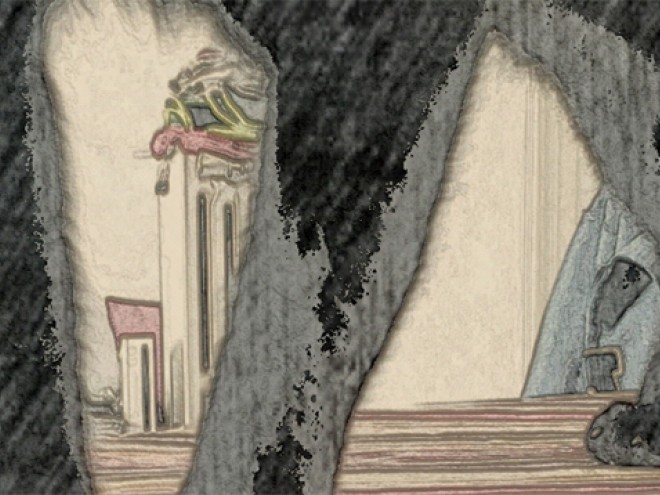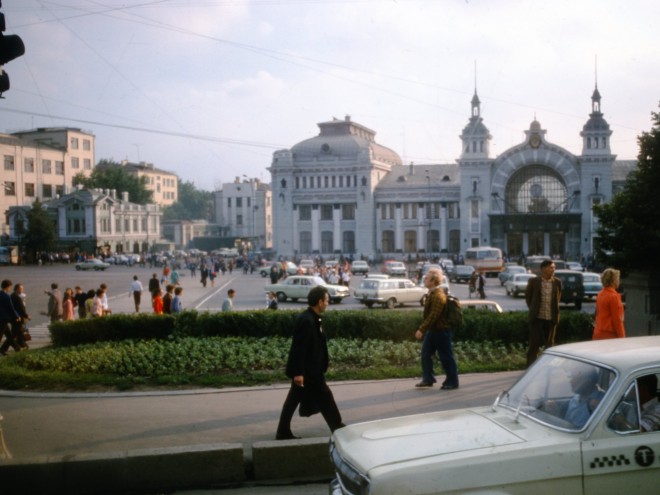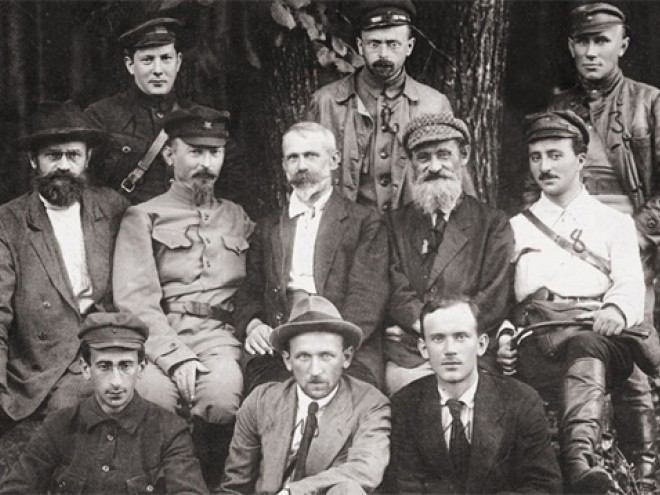Earlier this week, author Paul Goldberg wrote about the family stories that sparked The Yid and the popularity of King Lear in midcentury Moscow and Yiddish theater. With the release of his first novel, Paul has been guest blogging as a Visiting Scribe all week here on The ProsenPeople.
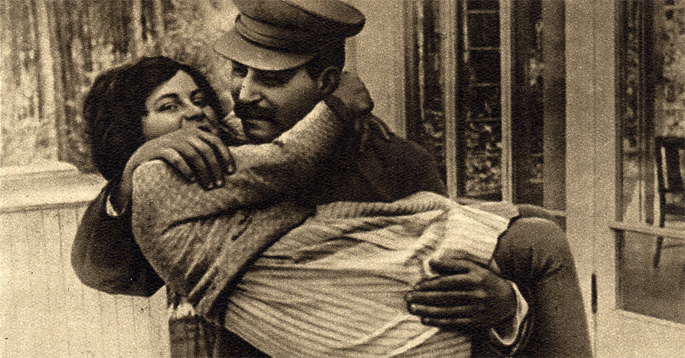
My novel The Yid is about a plot to assassinate Iosif Stalin before he launches the largest purge of his 29-year rule.
Stalin absolutely had to figure in my novel directly. I needed his physicality, his spiritual being. I had to get inside his skull, to taste his paranoia, his dementia. This task was an anathema of historical research. It’s impressionistic, existential. I was grasping for telling details that provided windows into the tyrant’s final hours. Does he believe the end is near? Does he believe that there can be no such thing as the world without Stalin? How does it feel to experience his brand of dementia, his brand of paranoia?
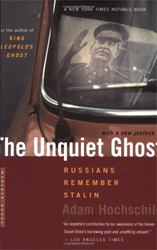 I scoured many volumes, looking for details, finally making a surprising finding: telling details are largely determined by the teller. For example, in a book called The Unquiet Ghost, Adam Hochschild describes traveling through Gorbachev’s Russia as it struggles to reconcile with its Stalin-era past. Hochschild asks the same questions I ask as a novelist, looking for the same insight into the tyrant’s mind.
I scoured many volumes, looking for details, finally making a surprising finding: telling details are largely determined by the teller. For example, in a book called The Unquiet Ghost, Adam Hochschild describes traveling through Gorbachev’s Russia as it struggles to reconcile with its Stalin-era past. Hochschild asks the same questions I ask as a novelist, looking for the same insight into the tyrant’s mind.
At Stalin’s dacha in Sochi, Hochschild describes the beautifully restrained Art Deco décor. Stalin’s other dacha in Kuntsevo, outside Moscow, is similarly elegant. Stalin-era architecture projects opulence. There are colossal sculptures, big columns. It’s the opposite of the modernist structures of the twenties and thirties and is eerily reminiscent of the Nazi Gothic style of architecture. From Hochschild’s reliable depictions, I was able to pick up on this strange inconsistency and the question it demands:
Why does this brigand choose to live in an environment so clearly inspired by Frank Lloyd Wright? Stalin’s interiors look like the sort of places where an American captain of industry — I am thinking of Nelson Rockefeller — would have been quite at home. Could it be that he is not as uncouth as we would like to believe? Does this choice of architecture come from within this man or does it just happen?
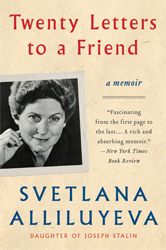 Another telling detail came from Stalin’s daughter, Svetlana. In her memoir 20 Letters to a Friend she recalls discovering that the old man hung photos of children on the wall of his study, cutouts from Soviet magazines. Svetlana attributes this to Stalin’s efforts to substitute fictional children for the grandchildren with whom he had no contact.
Another telling detail came from Stalin’s daughter, Svetlana. In her memoir 20 Letters to a Friend she recalls discovering that the old man hung photos of children on the wall of his study, cutouts from Soviet magazines. Svetlana attributes this to Stalin’s efforts to substitute fictional children for the grandchildren with whom he had no contact.
I trust Svetlana’s story, but not her explanation. What if the children are a part of the old man’s dementia? What if they are the nucleus of the world as he experiences it in the winter of 1953? What if they are the inspiration for his plans? Stalin doesn’t sleep much. He waits for children to step off the illustrations pinned to the walnut panels of Frank Lloyd Wright-esque rooms. How will the world exist without Stalin? The old man hates doctors, negates the very existence of disease. Will children come to his defense? Are they his guardians or harbingers of his death?
Images tell the story, too. Stalin is a little man with a crooked left arm. The arm has petrified, turned into granite, hard as a statue, which would be fitting, except the fingers curl. If you can part them with your right hand, a cigarette can be inserted. Or part them further and fold in a pipe. The elbow moves forward, then back again, but not the arm. It hangs at an obtuse angle. And pain is close, lurking in the left shoulder.
I had the set and Stalin’s physical characteristics.
From there, it would have been a cop-out to describe a demonic presence. I needed to know from someone I trusted what it was like to converse with the man.
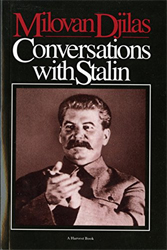 Here, I made use of the memoir of the Jugoslav Communist Milovan Djilas. It’s titled Conversations with Stalin and tells the story of his three brief meetings with Stalin. It works so well because the narrator doesn’t pretend to be comprehensive or objective. Svetlana isn’t separate enough from her father to provide the sort of telling details I needed as a novelist. (Nikita Khruschev, another notable memoirist, was a part of the same stratum.) By contrast, Djilas is an outsider, an intellectual, and he stays in the frame at all times, providing one telling detail after another.
Here, I made use of the memoir of the Jugoslav Communist Milovan Djilas. It’s titled Conversations with Stalin and tells the story of his three brief meetings with Stalin. It works so well because the narrator doesn’t pretend to be comprehensive or objective. Svetlana isn’t separate enough from her father to provide the sort of telling details I needed as a novelist. (Nikita Khruschev, another notable memoirist, was a part of the same stratum.) By contrast, Djilas is an outsider, an intellectual, and he stays in the frame at all times, providing one telling detail after another.
In one of these meetings, a scene that “might be found only in Shakespeare’s plays,” Djilas registers a complaint about Red Army soldiers raping and murdering women in areas they had liberated. The comment infuriates Stalin: The Red Army has fought for thousands of kilometers before marching into Belgrade in 1944, he objects, “And such an army was insulted by no one else by Djilas! Djilas, of whom I could least have expected such a thing, a man whom I received so well!” Stalin rages. “And an army which didn’t spare its blood for you! Does Djilas, who is himself a writer, not know what human suffering and the human heart are? Can’t he understand it if a soldier who has crossed thousands of kilometers through blood and death has fun with a woman or takes some trifle?”
Later in the feast, Stalin kisses Djilas’s wife, noting that he made this loving gesture at the risk of being charged with rape.
Dijlas’s final meeting with Stalin portends the latter man’s advancing dementia. “There was something both tragic and ugly in his senility,” Djilas observes. “The tragic was invisible — these were the reflections in my head regarding the inevitability of decline in even so great a personality. The ugly kept cropping up all the time. Though he had always enjoyed eating well, Stalin now exhibited gluttony, as though he feared that there would not be enough of the desired food left for him. On the other hand, he drank less…
“He laughed at inanities and shallow jokes… In one thing, though, he was the Stalin of old: stubborn, sharp, suspicious whenever anyone disagreed with him.”
At one point in this last conversation, Stalin opines about the atom bomb: “That is a powerful thing, pow-er-ful!” I don’t know the precise Russian words, but I think they would be: “Moschnaya shtuka, moshch-na-ya!” 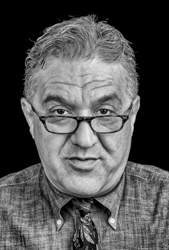
This is the “mountain man of the Kremlin” described by Mandelshtam:
His fat fingers are blacker than worms,
His words weighing a pood — 16-kilo.
Roach mustache emits a thick laugh,
And a glow emanates from his boots.
This is the Stalin I wanted my conspirators to encounter on March 1, 1953: crass, taunting, inane, demented, yet still as “pow-er-ful” as the weapons of hellish destruction he has in his arsenal.
Paul Goldberg has written two books about the Soviet human rights movement, and has co-authored (with Otis Brawley) the book How We Do Harm, an exposé of the American healthcare system. He is the editor and publisher of The Cancer Letter, a publication focused on the business and politics of cancer. He lives in Washington, D.C.
Related Content:
- Alan Lelchuk: My Wallenberg Education in Budapest, Stockholm, and Moscow
- Letty Cottin Pogrebin: Tightening the Narrative
- John Kessel and James Patrick Kelly: Kafka: A Man as Puzzling as His Stories
Paul Goldberg is the author of two previous novels: The Yid, a finalist for the Sami Rohr Prize for Jewish Literature and the National Jewish Book Award’s Goldberg Prize for Debut Fiction, and The Chateau. He has written two books about the Soviet human rights movement as well as an expose of the U.S. healthcare system. He lives in Washington, D.C.

